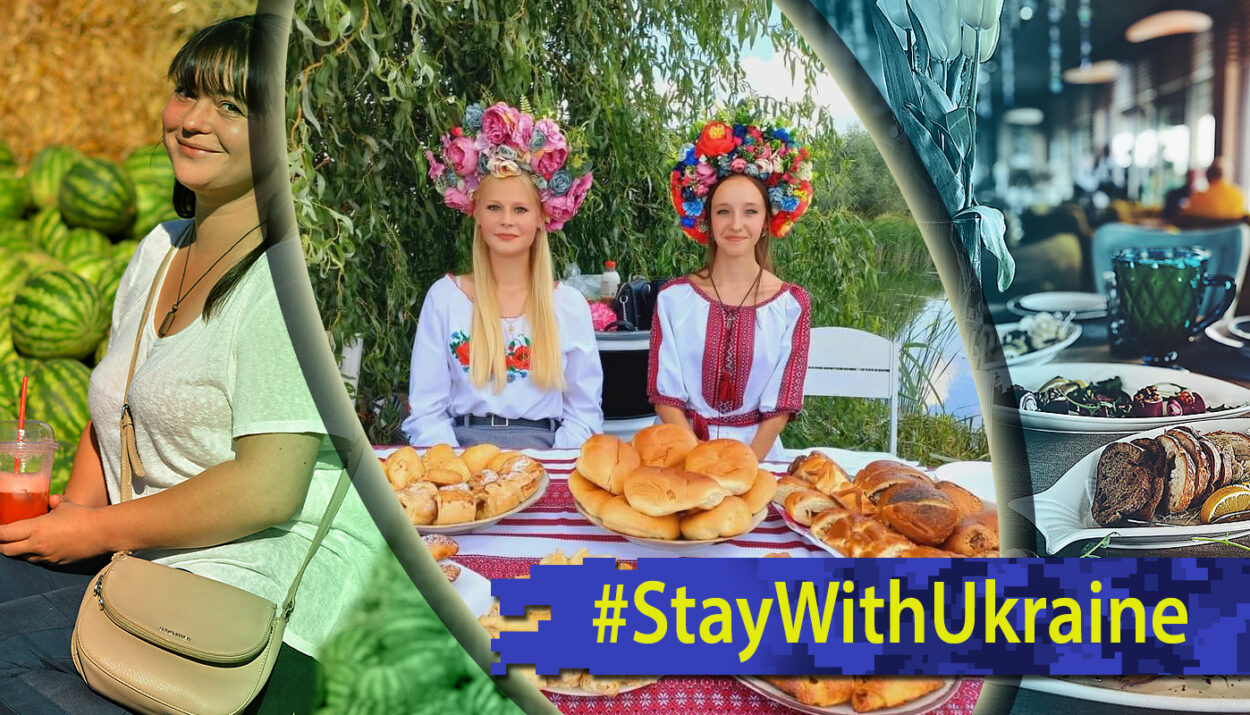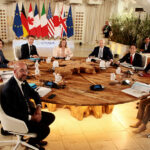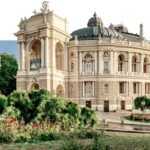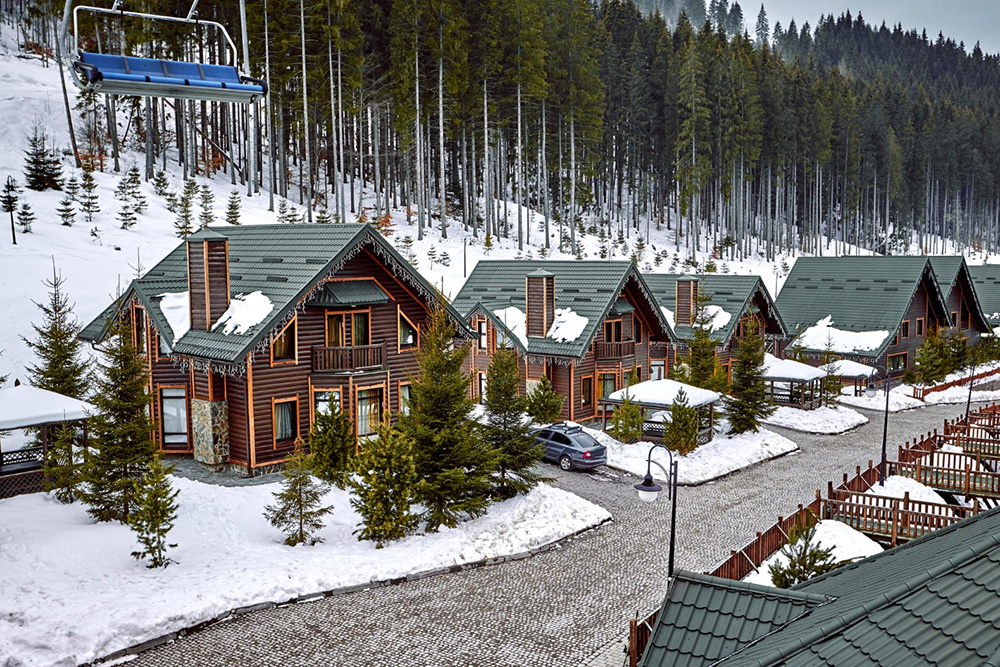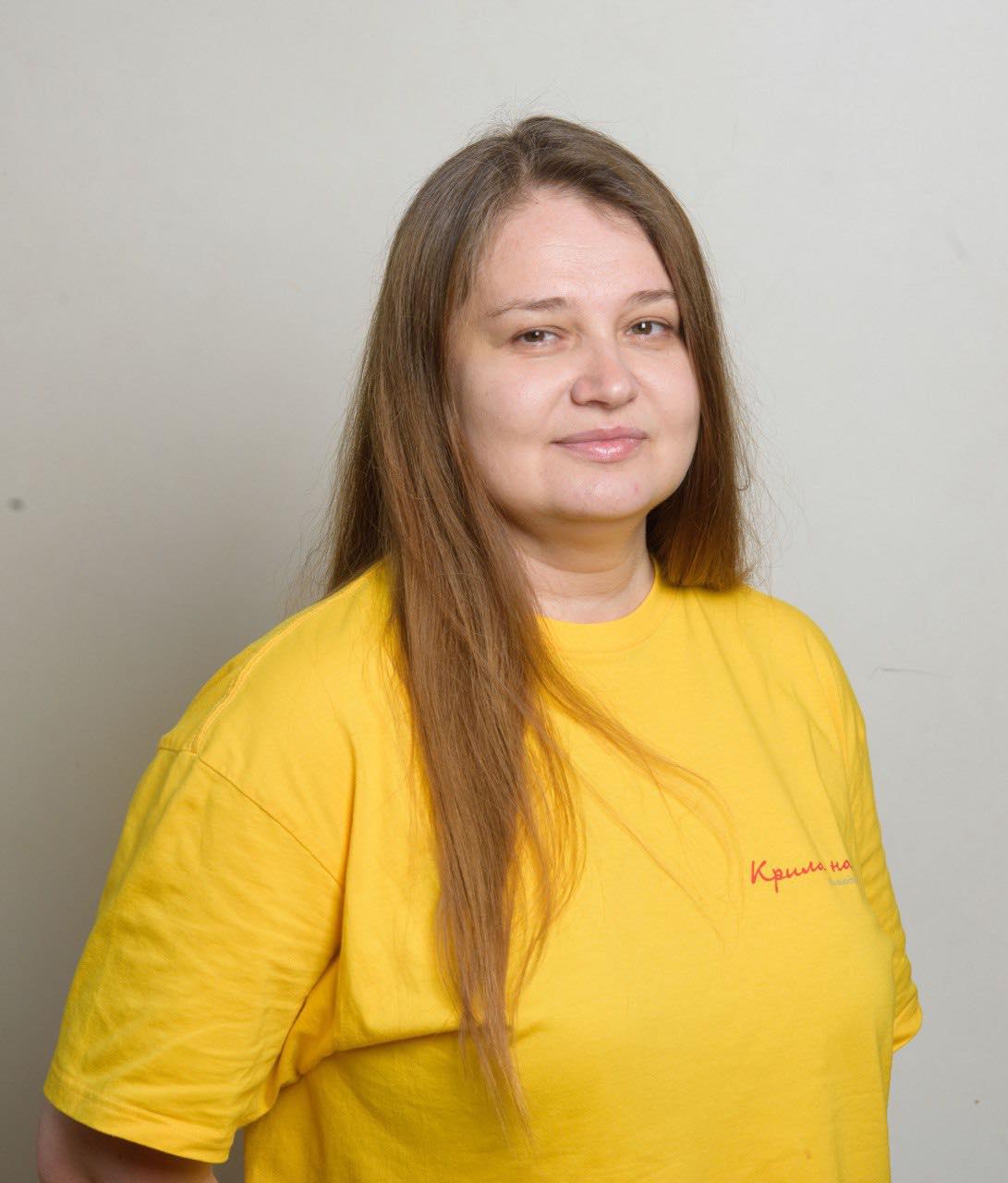Despite the fact that Ukraine has been engulfed in a full-scale war for almost three years, some regions continue to welcome foreign tourists who are fond of exotic gastronomic tours and extreme experiences. Moreover, the air raid alarms, the whistle of Russian missiles, the buzzing of Iranian drones, and the sounds of Ukrainian air defence systems only fuel the zest for life and, consequently, the appetite. In addition, the sense of physical danger is compensated by the three pillars of Ukrainian gastronomic tourism: a vast kaleidoscope of flavours, cosy service, and extremely affordable prices.
Gastrotourism in a country at war – what is it like? Ordering a few fish dishes in an Odesa restaurant or buying a few heads of bryndza at a Zakarpattia cheese factory means not only enjoying delicious food, but also supporting the local population that is steadfastly resisting the Russian occupiers, who leave only fear, pain and looted ruins everywhere. So if you are interested in visiting Ukraine for new gastronomic experiences, do it.
Gastronomic Solidarity
In the first six months of the full-scale invasion, gastronomic tourism in Ukraine virtually died, but soon began to slowly recover. Of course, when a European decides to travel somewhere purely for culinary impressions, they wouldn’t consider Ukraine. After all, a Russian missile can strike any point in the country at any moment – and although the local air defence system is improving thanks to Western support, it’s impossible to intercept 100% of the targets, especially during massive attacks.
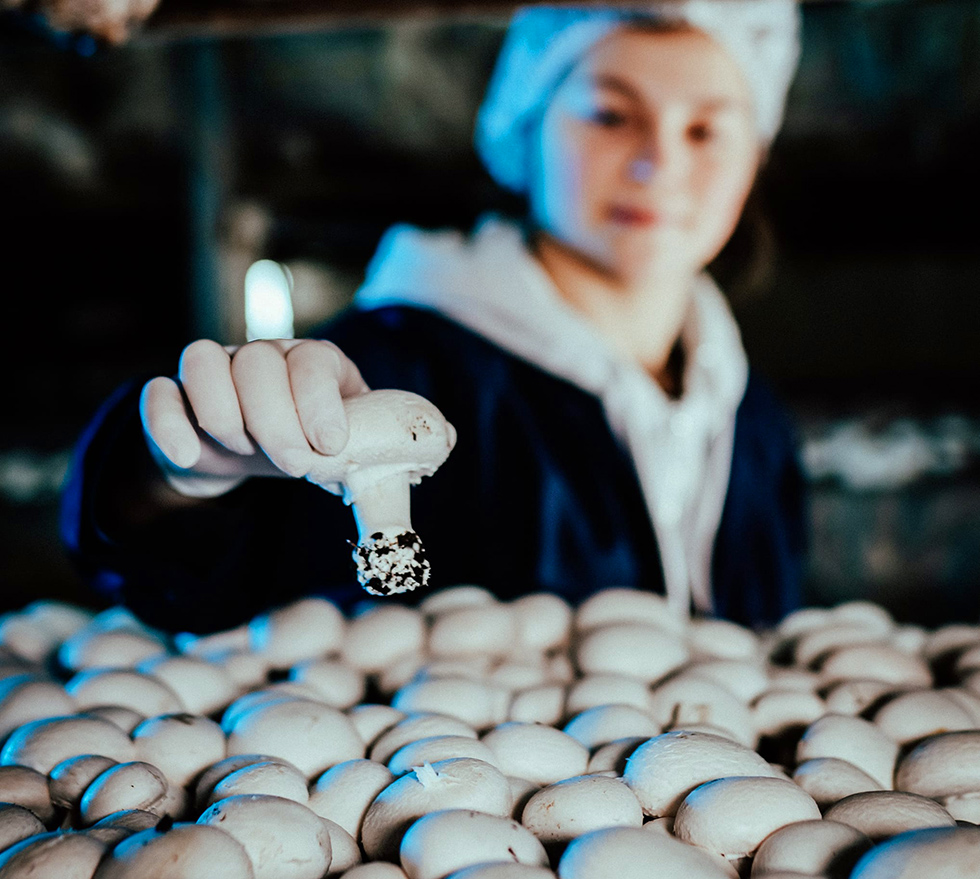 Photo: Mushroom farm in Yablunivka, Source: Yvk.kiev.ua
Photo: Mushroom farm in Yablunivka, Source: Yvk.kiev.ua
Thus, as an alternative to leisure tourism, business, volunteer, and solidarity tourism is developing in Ukraine. Some people go there on business to invest in local enterprises, some to help residents cope with the consequences of the war, and some to simply say with their friendly visit that they are with them, that their struggle against the Russian invaders is important, and not to give up… Consequently, gastronomic tourism becomes an adjunct to these three main goals. For instance, a person might consciously visit the infamous Bucha to dine in a restaurant that somehow survived the occupation and support its staff. Another example of solidarity tourism is the mushroom farm in Yablunivka. It wasn’t under occupation, but at the beginning of the war, it fed the territorial defence forces with 60 tonnes of mushrooms. Therefore, tourists now visit the farm for tasting and to support the business that worked for free at a critical moment.
Safety Rules
You never know where and when the next Russian shell will arrive – tomorrow, today, in a few hours. Gastrotourism in Ukraine is about supporting brave and unconquered people who, even in such difficult times, are able to continue their business, and some find the strength to start their life’s work from scratch.
Many Ukrainians have continued to actively develop an authentic restaurant culture in regions farther away from the frontline. For example, in the west of the country: in Zakarpattia, which borders Hungary, in Volyn and Polissia, where, however, the threat of a new invasion remains due to the neighborhood with Belarus, which is actually occupied by the Russians, in the largest cities with a population of over a million people, etc.
So, how do you choose where to go to have a delicious meal and support the resilient Ukrainians? Whatever you choose, be sure that you will be greeted with warmth and hospitality in any restaurant. Kharkiv region in the east, Odesa in the south, Kyiv and Dnipro in the center of Ukraine, Lviv, Ternopil and Zakarpattia in the west are ready to offer their guests delicious and hearty meals, proving to the world that the Russian occupiers will not succeed in destroying the cohesion and endurance of Ukrainians working in the face of war, rocket attacks and the sound of air raid sirens.
Due to constant Russian attacks on Ukraine’s energy system, schedules for stabilisation and emergency power outages are in place. Information about where, when, and for how long the power will be cut is promptly updated on government portals and energy company websites. For example, in Kyiv and Dnipro, blackout forecasts can be checked on the Yasno website. In any case, when travelling to Ukraine, you should pack a powerful power bank and a flashlight in your travel bag. You can charge your gadgets for free 24/7 at thousands of so-called “Points of Invincibility” – here is a map of their locations throughout Ukraine.
 Photo: Pack a powerful power bank and a flashlight in your travel bag, Source: Aliexpress
Photo: Pack a powerful power bank and a flashlight in your travel bag, Source: Aliexpress
Additionally, while in Ukraine, it is important to always know where the nearest bomb shelter is. These are usually metro stations, underground passages, basements of schools and residential buildings. Maps of shelters are also published on official city portals or in special applications, such as the “Kyiv Digital” app. By installing it, you will also receive timely notifications about air raids and emergency weather conditions (hurricane winds, air pollution, extreme heat, etc.). Overall, Ukraine has a plethora of gastronomic establishments located in basements or semi-basements, which are essentially bomb shelters, like the “Ostannya Barykada” bar or the Ukrainian cuisine restaurant “100 Rokiv Tomu Vpered.”
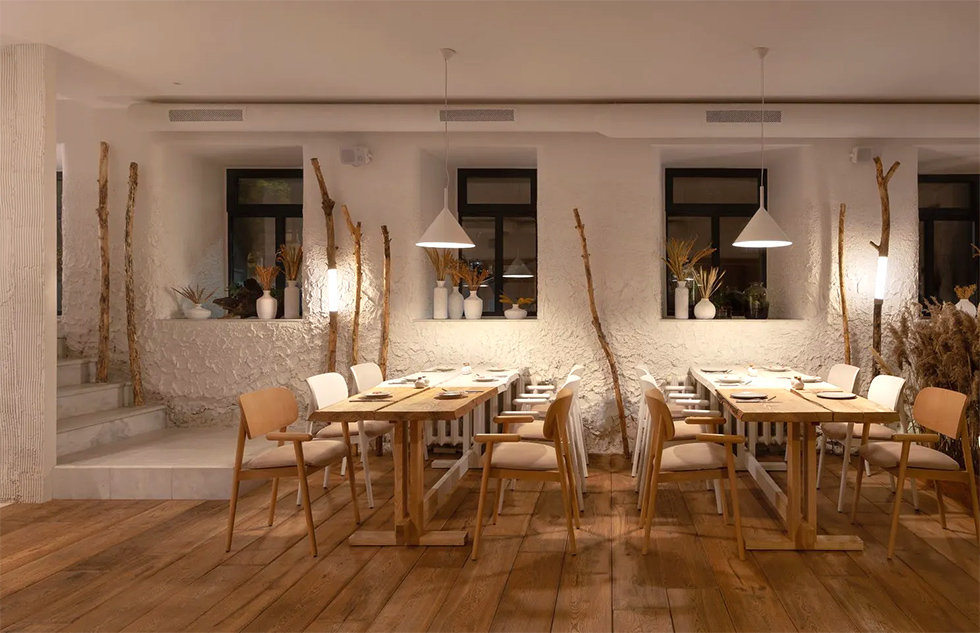 Photo: Ukraine has a plethora of gastronomic establishments located in basements or semi-basements, which are essentially bomb shelters, like the “Ostannya Barykada”
Photo: Ukraine has a plethora of gastronomic establishments located in basements or semi-basements, which are essentially bomb shelters, like the “Ostannya Barykada”
Furthermore, Ukraine arguably has the best food delivery service from restaurants in the world. While hiding in a bomb shelter from a missile attack, you can order a delicious breakfast, lunch, or dinner directly there. Heroic couriers from companies like Glovo, Loko, and Bolt work even during air raids, which was humorously highlighted by a Dutch stand-up comedian after his visit to Kyiv in the legendary comedy act “Sergiy Pedals”.
If you can’t understand how it is technically possible to go on a gastronomic tour in a country at war, believe that the only serious obstacle is owning one of these passports: Russian, Belarusian, Iranian, or North Korean. For everyone else, there are no special problems crossing the border of Ukraine for tourism, volunteer, or solidarity purposes. Detailed information about entry rules, visa regime, medical insurance, and more can be found on the service of the Ukrainian Tourism Public Union VisitUkraine. On this website, you can also conveniently choose various tours, including gastronomic ones, as well as book hotels and buy tickets. The site also has a 24/7 English-language support chat.
A Map of Ukrainian Flavours
Having decided on the place of travel, you can move on to gastronomic preferences. It is clear that anywhere in Ukraine, from east to west and from north to south, you can taste the national cultural heritage – delicious borscht (the original version, not the Russian counterfeit). Besides the signature Ukrainian soup, each region of the country is distinguished by its unique flavours, products, and culinary traditions.
Zakarpattia
 Photo: Mangalica – the only breed of fluffy pigs in Europe
Photo: Mangalica – the only breed of fluffy pigs in Europe
Zakarpattia is the most developed gastronomic region, famous for its cuisine, which combines Hungarian, Ukrainian, Slovak, and Romanian recipes. Bograch, goulash, loksha, delicacies from Mangalica (the only breed of fluffy pigs in Europe), plum jam “lekvar,” and honey-based desserts are the foundation of the local flavour palette. Additionally, the popular tourist route “The Road of Wine and Taste” offers a wonderful opportunity to visit two dozen old wineries and cheese factories.
Lviv and Ternopil Regions
Lviv and Ternopil regions are the epicentres of Ukrainian coffee fever. Hundreds of cosy cafes (some with centuries of history) and exquisite confectioneries will delight even the most discerning coffee enthusiasts. The local cuisine is built on a blend of Ukrainian, Polish, and Austrian dishes. Moreover, many businesses in these areas are being opened by war veterans: they create snail farms, breed goats and sheep, and welcome all ecotourists who settle in wooden cottages, learn to feed livestock, and enjoy treats from local production.
Odesa
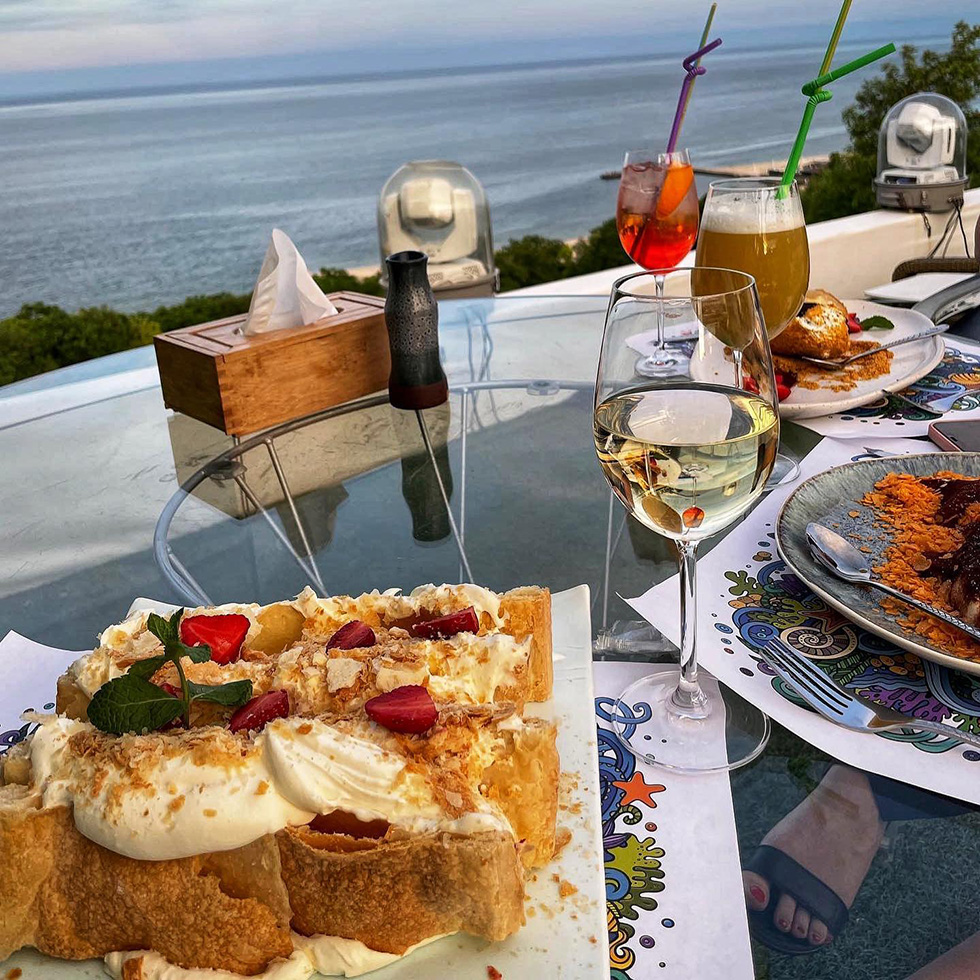 Photo: Fish restaurant in Odesa, Source: Facebook
Photo: Fish restaurant in Odesa, Source: Facebook
Odesa, the largest Ukrainian seaport, will appeal to fans of fish dishes and seafood. The region is known for Bessarabian cuisine, primarily based on meat and cheese delicacies, and centuries-old winemaking traditions. Avid tasters will enjoy tours of the wineries and wine cellars in Izmail, Krynychne, and Shabo.
Kherson Region
Kherson region boasts the world’s tastiest watermelons and tomatoes, which Ukrainians heroically reclaimed from Russian occupiers in 2022.
Kharkiv
Kharkiv is the birthplace of the legendary “Kharkiv” chocolate-wafer cake, with a secret recipe that hasn’t changed since the 19th century. There aren’t many things in the world worth darting around a frontline city, dodging shellfire, but the “Kharkiv” cake is definitely one of them.
Dnipropetrovsk Region
Dnipropetrovsk region, located in central Ukraine, has the most diverse culinary traditions from all four corners of the world. In Dnipro, you will find luxurious restaurants offering Cossack, Jewish, Armenian, Azerbaijani, Georgian, German, Romani, Polish, Korean, and many other national cuisines. Additionally, Dnipro, like Kyiv, Odesa, and Lviv, has a highly developed bar culture – from sports pubs to cocktail bars, making it a haven for fans of bar crawling in these cities.
Poltava Region
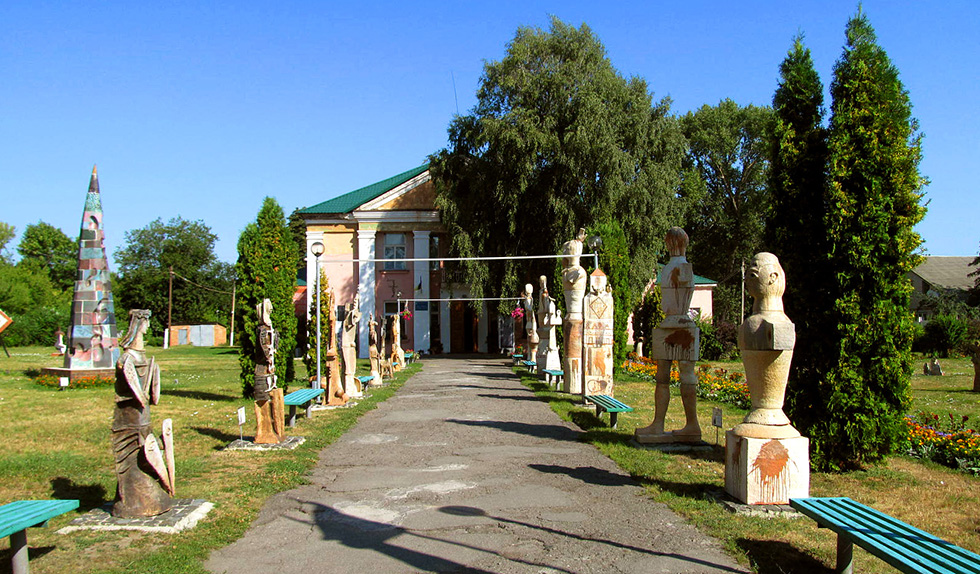 Photo: Open-air pottery art museum in the village of Opishnya, Source: Ua.travel
Photo: Open-air pottery art museum in the village of Opishnya, Source: Ua.travel
Poltava region is not only about varenyky and halushky, but it is also the main Ukrainian destination for plum tourism, with the village of Opishnya, where an annual festival is held, being its mecca.
Kyiv
Kyiv, the capital, is home to the best elite restaurants, which long before the war began supporting local craft food producers. As a result, numerous organic livestock farms, cheese factories, beekeeping farms, and many other enterprises, such as banana greenhouses and ostrich farms, have sprung up around Kyiv like mushrooms after the rain.
Renowned Restaurateurs
Perhaps you don’t have specific gastronomic preferences, and your mouth waters not at the names of dishes, but at the names of genius chefs, star restaurateurs, and lists of their best establishments. Here’s a brief guide to the famous Ukrainians who, despite the war, maintain the local restaurant culture at a European (and sometimes higher) level.
Savely Libkin
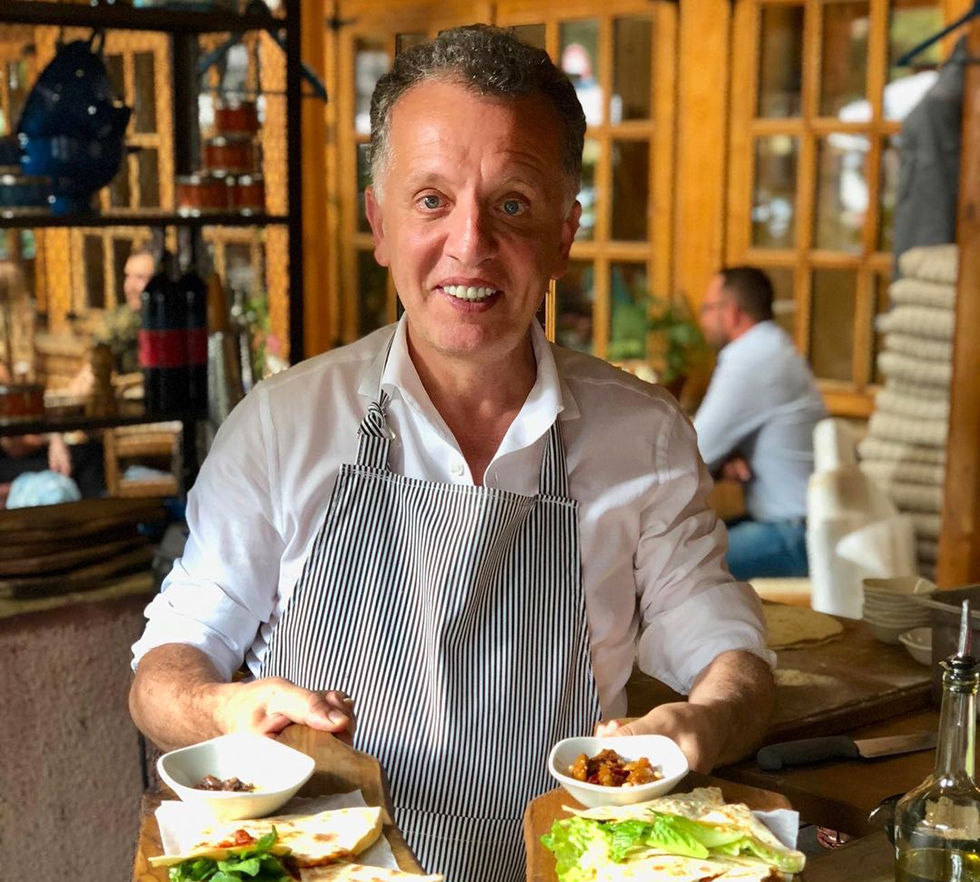 Source: Instagram
Source: Instagram
Savely Libkin is the owner of the Odesa cuisine embassy restaurant “Dacha,” the Italian restaurant “Tavernetta,” and the chain of French cafes “Kompot.” During the war, he categorically refused to be a refugee. When faced with the fact that part of his staff, who went to the army, became disabled, he decided, at over 60 years old, to switch to Ukrainian, which he had never learned, and to preserve his popular establishments for the people of Odesa. Libkin has almost no serious competitors in his hometown because he chose the right strategy from the beginning:
“I’ve been to many restaurants where people come for anything but food. They visit to show off their new outfits, photograph the interior or dish designs, smoke hookah, or confirm their special status. If you open a restaurant with delicious food and the right atmosphere, you’ll be surprised at how few competitors you have in this field.”
Dmytro Borysov
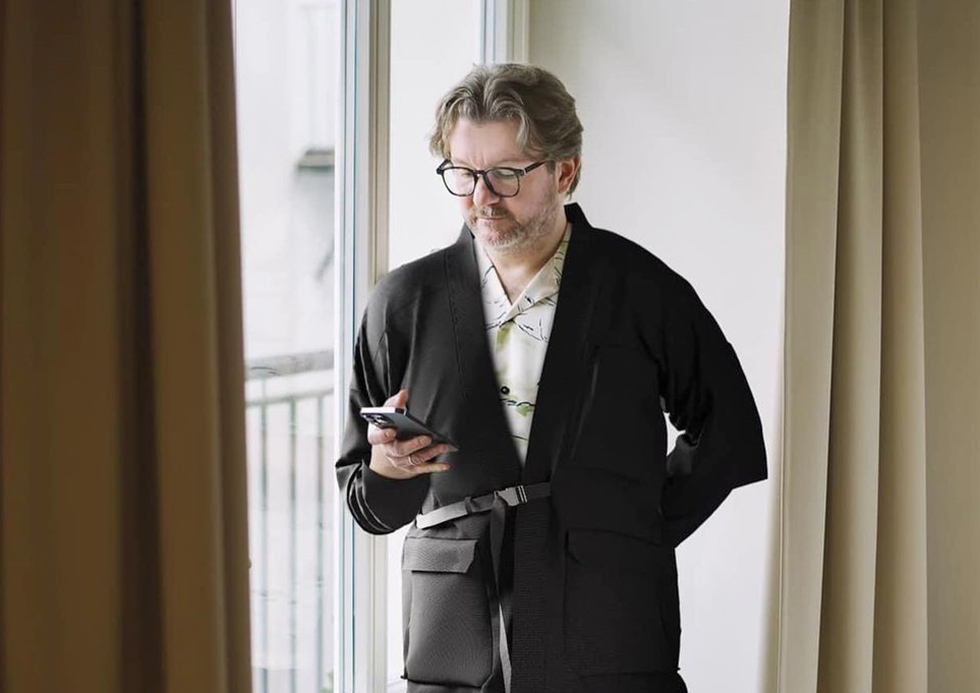 Source: Instagram
Source: Instagram
Dmytro Borysov is the Kyiv owner of a family of 50 establishments, including the Ukrainian cuisine restaurant “Kanapa,” the artistic-gastronomic space “Ostannya Barykada,” the Asian steakhouse “Oxota na Ovets,” and the signature Kyiv restaurant “Chicken Kyiv,” named after the world-famous Kyiv-style cutlet. When the war began and Ukrainians stopped frequenting restaurants, Borysov realized that alongside elite establishments, he needed to focus on highly democratic formats, such as the affordable seafood bar “Mushlya” or the street food chain “BPSH” (which stands for “Belyashi-Ponchiki-Shaurma”):
“I moved to this ‘democratic segment’ to finally start competing not with other establishments, but with the home stove, with the guests’ choice mindset. So they wouldn’t cook at home but would spend quality time, as is customary in the civilized world. According to my statistics, 90% of people don’t like cooking at home, but the 70-year Soviet occupation taught them to.”
Dmytro Zahodiakin
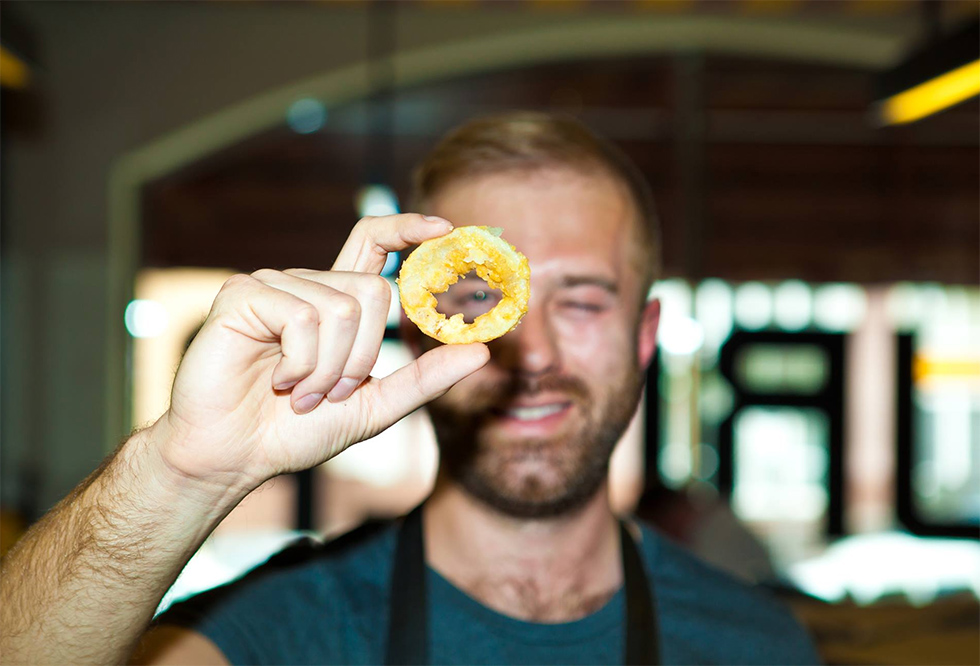 Source: Facebook
Source: Facebook
Dmytro Zahodiakin is probably the main “bad boy” of the Ukrainian restaurant industry. Kyivans criticize his establishments for their pomp and high prices but visit them regularly. In 2018, Zahodiakin unexpectedly sold his top restaurants – “The Bar,” “The Cake,” “The Burger,” and “Sho.” Rumor has it that the financial deal set a national record. Zahodiakin kept the popular bakery chain “Khlibny”:
“For those visiting ‘Khlibny’ for the first time, I recommend trying the croissant. It’s our superpower.”
Serhiy and Yevhen Husovskyi
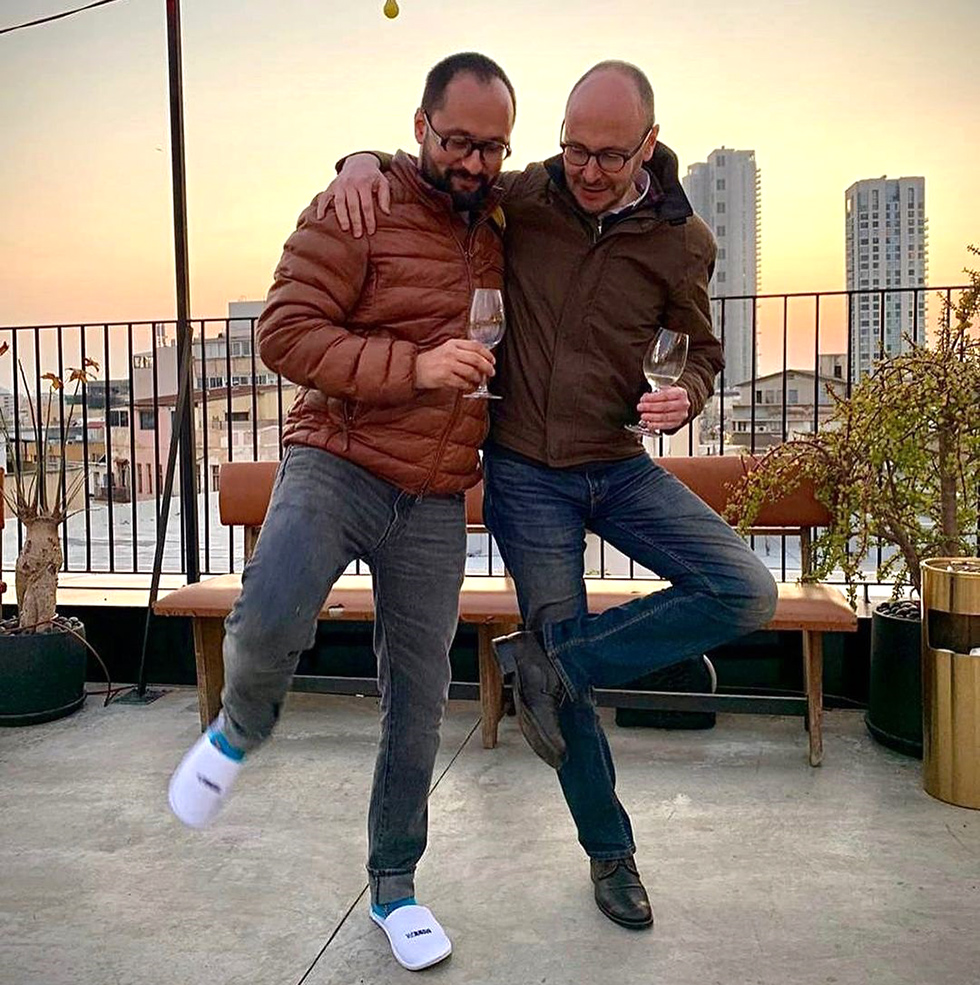 Source: Instagram
Source: Instagram
The Husovskyi brothers are famous Kyiv restaurateurs. Their pizzeria “Napule,” headed by chef Geppo Irollo, was the first in the country to receive the prestigious Associazione Verace Pizza Napoletana certificate 15 years ago. The osteria “Pantagruel” was the first establishment opened by the Husovskyi brothers, serving the best homemade pasta in Ukraine for a quarter of a century. They also own the restaurant “Shoti,” the main Kyiv hub of Georgian cuisine, offering excellent khachapuri, khinkali, lobio, chicken tabaka, kharcho soup, and, of course, a wide selection of Georgian wines. Staying and working in Kyiv during the war is a conscious choice by the Husovskyi brothers, which Yevhen explains this way: “When you are a professional in some field and such wild stress occurs, some people’s reaction is to run, while others’ is to go to work. Then at least your head is occupied with something that has satisfied you in life.”
Maksym Khramov
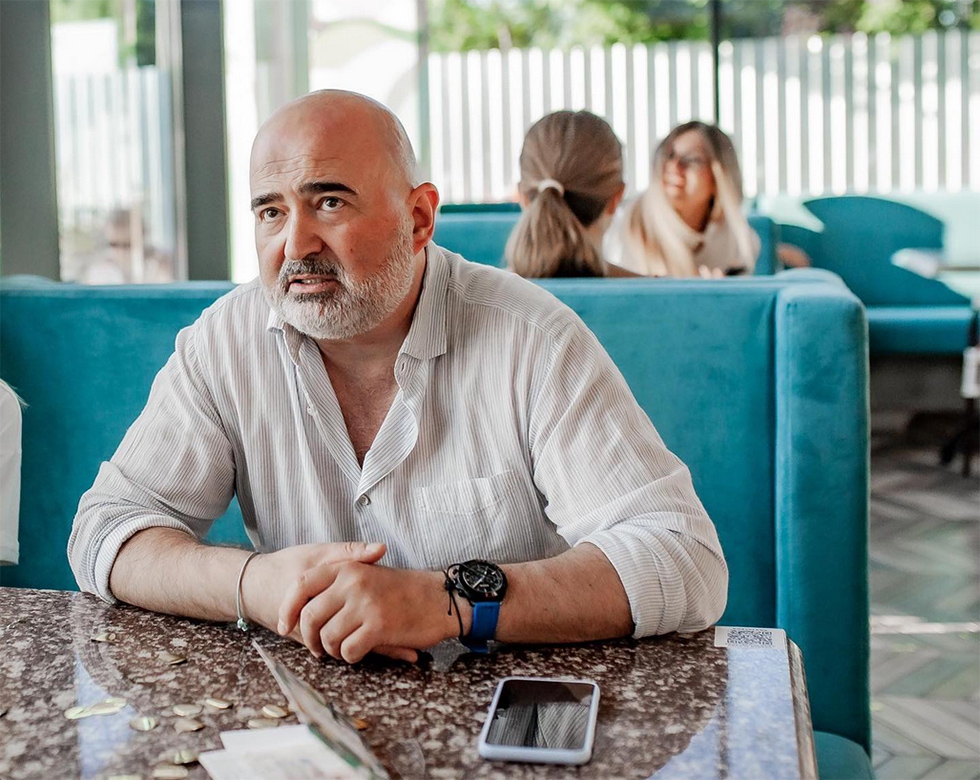 Source: Instagram
Source: Instagram
Maksym Khramov, a Ukrainian restaurateur who has opened over fifty popular formats in 20 years of work, actively volunteered during the first months of the war, cooking with his staff for the needs of the Armed Forces and territorial defense. He currently owns the Italian cuisine establishment “Pastateca.” Khramov is convinced that gastronomic tourists will definitely enjoy Ukraine – even during the full-scale war:
“Despite everything, the level of quality in the restaurant business in Ukraine is much higher than in Europe.”
Mark Zarkhin
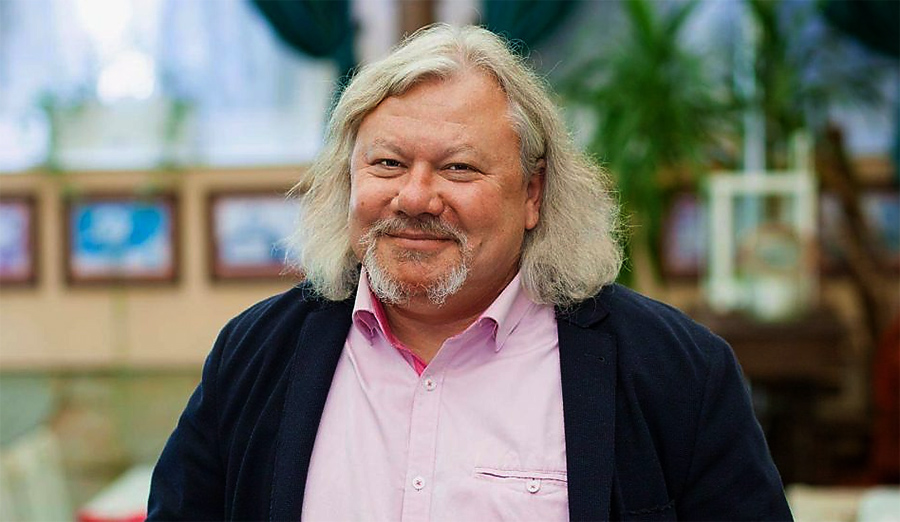 Source: Uabl.org
Source: Uabl.org
Mark Zarkhin is the creator of the three-story establishment “Restoratsiya Bachevskykh” in Lviv. The restaurant features an orangery, terrace, veranda, and live music from harp, cello, and piano, along with ancient Galician dishes reimagined in a modern way, such as “gefilte fish Lviv-style.” This unique combination is the secret to the restaurant’s success and popularity, making it a kitschy landmark of Lviv:
“Our establishment has a lot of flamboyant brightness, but we look at it with a smile, not pretending it’s high art. I love playing with kitsch. The main thing is that kitsch should not become self-sufficient, the main thing is not to be proud of it. There’s a lot of kitsch in Lviv now. But we are currently forming, looking for our new identity.”
Hector Jimenez-Bravo
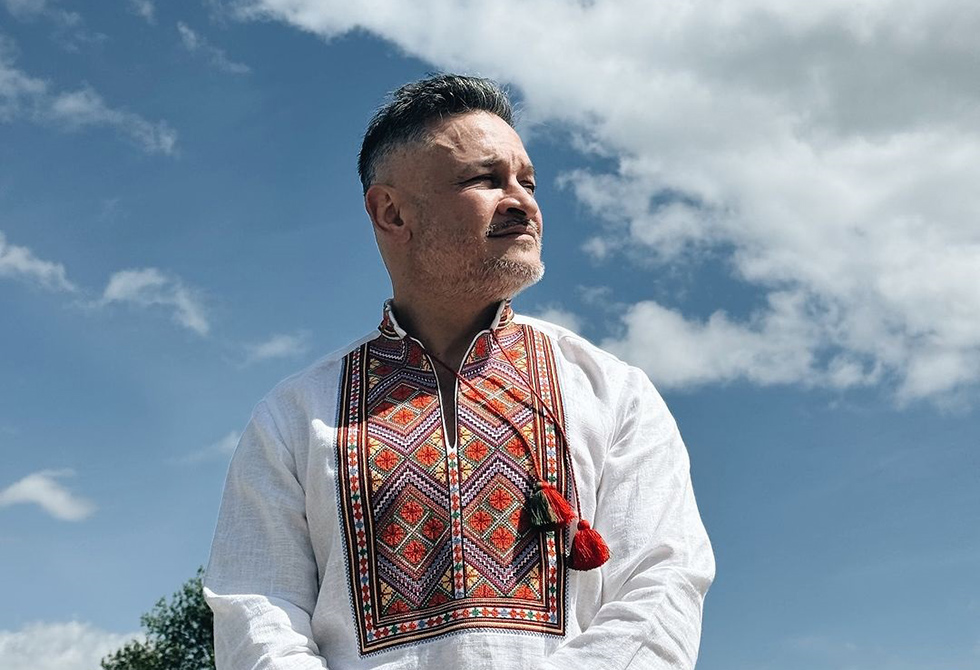 Source: Instagram
Source: Instagram
Hector Jimenez-Bravo, a star Colombian-Canadian chef, has been an integral part of the judging panel of the Ukrainian adaptation of the “MasterChef” show since 2011. Over the years, he has embraced Ukrainian culture and lifestyle so deeply that he began calling Ukraine his second home. In his modern Chinese cuisine restaurant “BAO,” you can taste the best Peking duck. For those who appreciate Vietnamese cuisine, the “NAM” restaurant will be to their liking. Despite the risk to his life, Hector not only leads shows on Ukrainian TV and manages his restaurants but also regularly volunteers for the defense of the country:
“I didn’t know that I would decide to return to Ukraine from the first days when the war started. I didn’t know that I wouldn’t be afraid. Since the war started, I am no longer afraid of dying. I didn’t think that my priorities could change. I learned to appreciate things better than before. We don’t need many things to live. Ukraine also taught me patriotism. I didn’t know what that was before. I learned a lot about its history. I was very lucky to stay here at this time.”
Yevhen Klopotenko
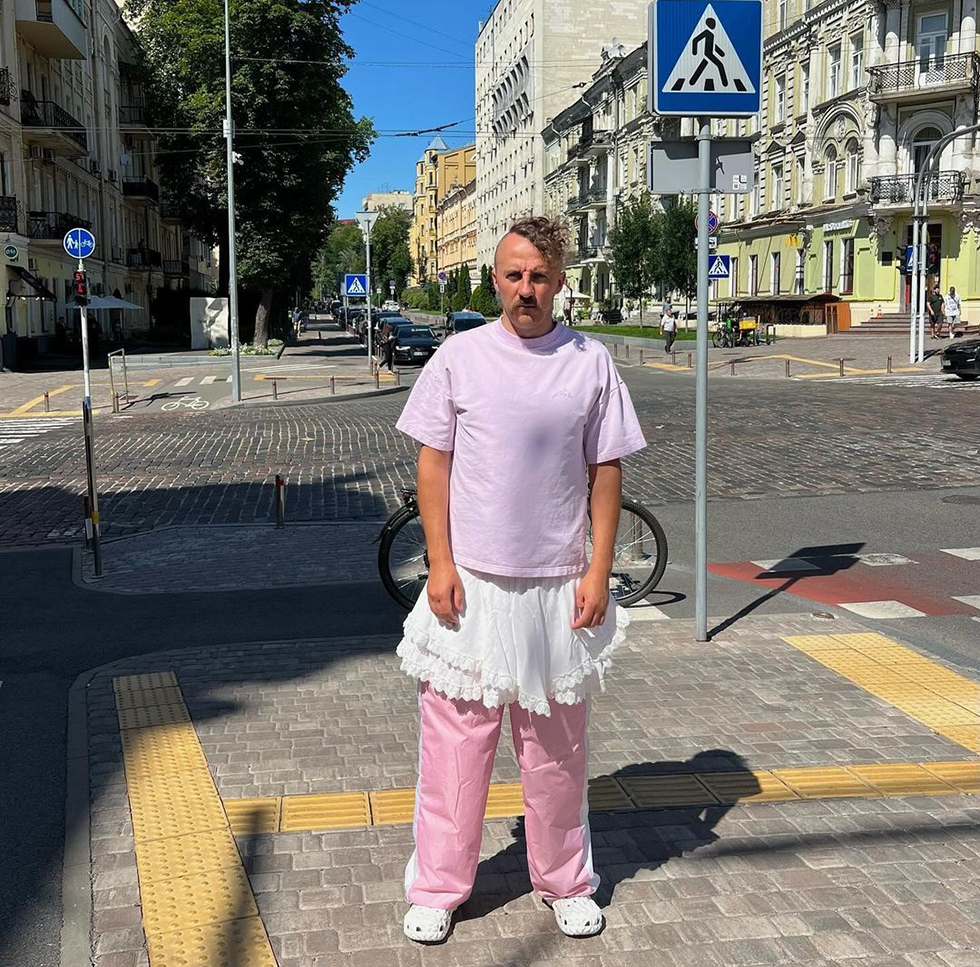 Source: Instagram
Source: Instagram
Yevhen Klopotenko is another star of the Ukrainian “MasterChef,” but not a judge – he is a winner. After participating in the project, he actively fought to change Soviet culinary traditions in Ukrainian schools and households. As a restaurateur and chef, Klopotenko owns the Kyiv establishment “100 Rokiv Tomu Vpered,” where he reinterprets ancient Ukrainian dishes in a modern way, as well as the Lviv bistro “Inshi.” It was also Klopotenko who initiated and eventually won the so-called “borsch war” with Russia, resulting in UNESCO recognizing Ukrainian borsch as an intangible cultural heritage of humanity in 2022:
“From the first day of the great war, my team and I supported Ukrainians through food. I actively engaged in gastro-diplomacy and told the world about the events in Ukraine.”
Kyrylo Kysliakov
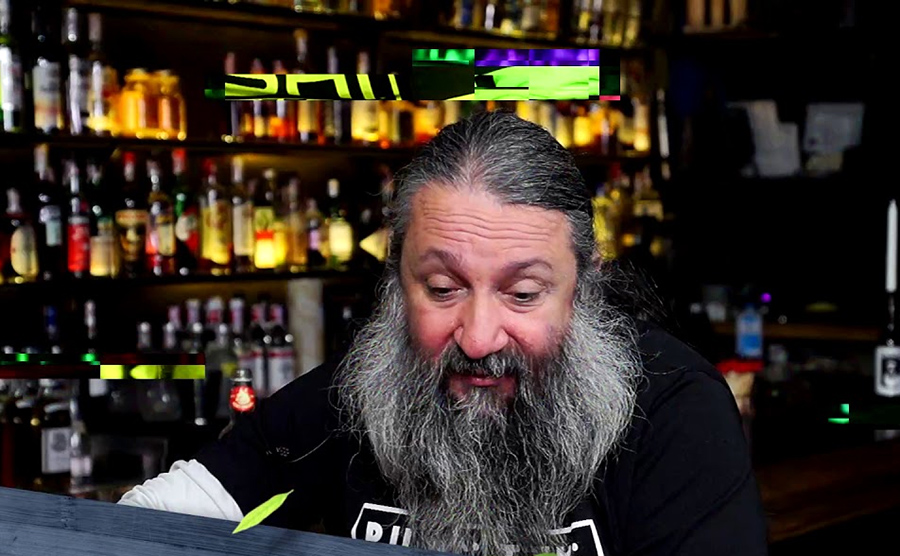 Source: YouTube
Source: YouTube
Kyrylo Kysliakov is the co-owner of the most famous bar in Kyiv, “Barman Dictat,” a legend and patriarch of Ukrainian bar culture, often respectfully called “Father.” In Ukraine, a bar is not just a place for drinking; it’s primarily a friendly social hub and hospitable gateway to the country. For example, in May, U.S. Secretary of State Antony Blinken played guitar with the Kyiv punk band “19.99” at Kysliakov’s establishment, performing Neil Young’s song “Rockin’ in the Free World.”
A Ukrainian soldier influenced Kysliakov’s decision to continue working during the war:
“At first, it seemed to me – why bother with this bar? War… But my friend, who serves, came and said: when I lie somewhere in a trench and aim something at something, I think about three things. The first is my children, for whom I lie here and do my job so that they live in a country without war. The second is my wife, to whom I will return, wash up, and maybe have more children. And the third is ‘Barman Dictat,’ where after the war, I will sit and order a pink cocktail with an ikebana and drink it. So if you don’t mind being third after children and wife, I would like you to keep working…”
Marco Cervetti
 Source: Facebook
Source: Facebook
Marco Cervetti is a star Italian chef who has long lived in Ukraine and developed the local gastronomic culture. In 2020, his restaurants “Positano” and “Le Grill” were named restaurants of the year by the international guide to oils Flos Olei (the “olive Michelin”), and Cervetti himself was recognized as the best chef. Additionally, the Kyiv Neapolitan cuisine restaurant “Positano” twice entered the prestigious “50 Top Pizza Europe” ranking. Furthermore, Cervetti runs his YouTube channel, where he travels to Ukrainian gastro-locations and inspects them with his meticulous Italian eye. The war undoubtedly worries the Italian chef, but it does not deter him from hedonism:
“Of course, alarms and news greatly affect life. But what helps me stay strong is faith in victory. And I also have the best neighbors! Over the past year, we’ve spent so much time together in shelters that we’ve become good friends. We have a special chat: when the evening alarm starts, everyone writes what tasty thing they can bring to the shelter, and we have an impromptu feast.”
The Best Ukrainian Bars, Cafes, and Restaurants During the War – The Gaze’s Choice
If we have convinced you that a tour to Ukraine, which is currently fighting the Russian invaders, is a bold, interesting and promising idea, here’s a list of wonderful Ukrainian establishments where you will be guaranteed a memorable meal, even during air raid alerts and power outages:
Restaurants:
Best Ukrainian Restaurant: Restoratsiya Bachevskykh (Lviv)
Best Asian Restaurant: Fujiwara Yoshi (Kyiv)
Best Italian Restaurant: Positano (Kyiv)
Best French Restaurant: Paul (Kyiv)
Best Georgian Restaurant: Shoti (Kyiv)
Best Crimean Tatar Restaurant: Musafir (Kyiv)
Best Uzbek Restaurant: Plov Khochu (Dnipro)
Best Meat Restaurant: Argentina Grill (Kharkiv)
Best Fish Restaurant: Dacha (Odesa)
Best Wine Restaurant: Vino e Cucina (Kyiv)
Best Beer Restaurant: THIS IS PIVBAR (Kyiv)
Best Hotel Restaurant: Panorama, Edem Resort (Strilky village)
Best Suburban Restaurant: RIVERWOOD (Moshny village)
Bars and Cafes:
Best Pizzeria: Napule (Kyiv)
Best Bar: Parovoz Speak Easy (Kyiv)
Best Wine Bar: Winovnik (Dnipro)
Best Beer Bar: Varvar Bar (Kyiv)
Best Bistro: Lou Lou (Odesa)
Best Bakery Café: BreadWay (Odesa)
Best Confectionery: SHOco (Lviv)
Best Coffee Shop: ONE LOVE (Kyiv)
Source: The Gaze


